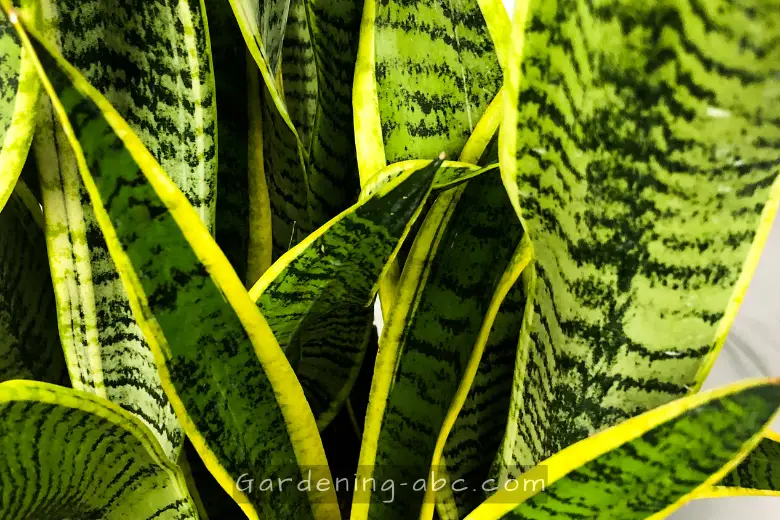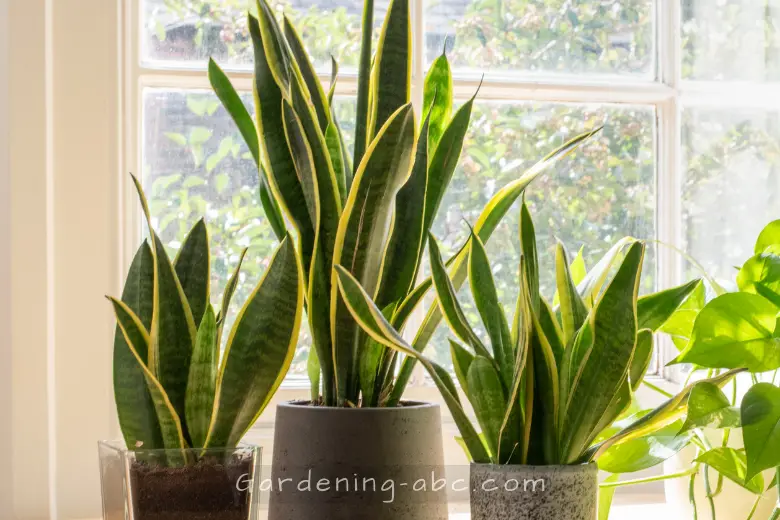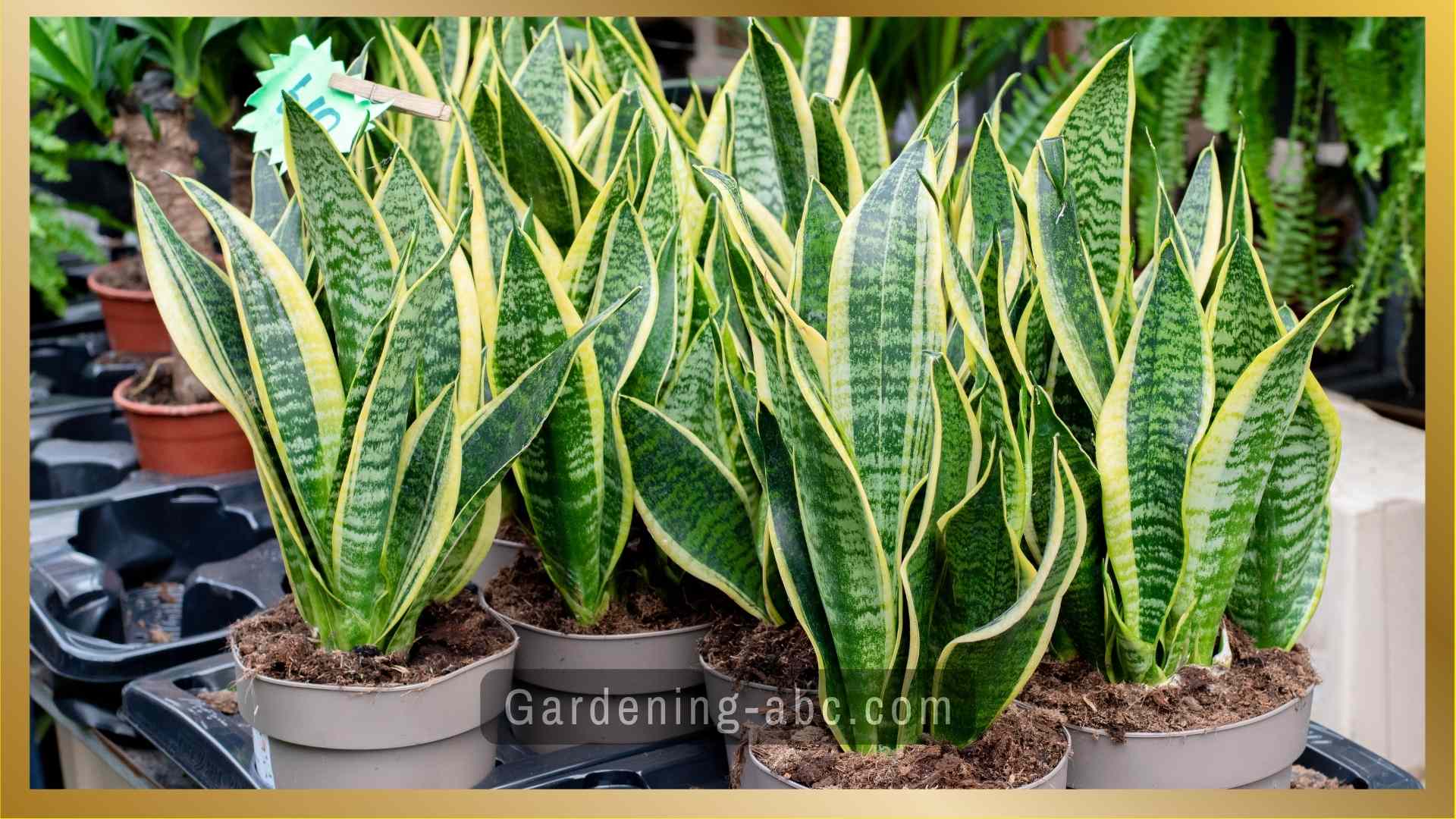We use affiliate links to run our site. When you buy through links on our site, we may earn an affiliate commission, without any added cost to you. Learn more
Are you a plant lover looking to expand your collection? Or maybe you’re just starting out and want to try your hand at propagating one of the easiest plants out there? Look no further than the Snake plant!
With its striking foliage and low-maintenance nature, the Snake plant is a perfect addition to any indoor garden. But did you know that propagating Snake plants is an easy and fun way to multiply your plant collection?
That’s right, you can easily create new snake plants from just a few leaves or a small piece of the stem.
In this post, I will show you how to propagate snake plants in three easy ways. You will learn how to use water, soil, and rhizomes to create new plants from your old ones.
By the end of this post, you will be a snake plant propagation expert and have a beautiful collection of plants to enjoy or give away.
Ready to get started? Let’s go!
Understanding Snake Plant Propagation
Propagation is a common practice among plant enthusiasts to create new plants from existing ones. It is done through several methods, including seed propagation, vegetative propagation, and tissue culture.
Why is Propagation Important for Snake Plants?
Propagating your snake plant allows you to create more plants for your home or to share with others. It also promotes healthy growth and prolongs the life of the original plant.
Snake plants have a unique structure that includes a rhizome, which is a thick stem that grows underground, and long, upright leaves that emerge from the rhizome. The leaves are typically green with yellow margins and can grow up to several feet tall.
When to propagate Snake Plants:
The best time to propagate your snake plant is during its active growing season, which is typically in the spring or summer. Propagating during this time will ensure that the new plant has the best chance of establishing itself and growing successfully.
1. How to Propagate Snake Plants from Leaf Cuttings

Propagating snake plants from leaf cuttings is a popular method among plant enthusiasts. It’s an easy and straightforward process that can be done with just a few materials.
Materials Needed
- A healthy snake plant
- Clean, sharp scissors or pruning shears
- A clean, sharp knife
- A small pot with well-draining soil
- A plastic bag or plastic wrap
Step-by-Step Guide to Propagating Snake Plants from Leaf Cuttings
- Choose a healthy leaf from your snake plant and use clean, sharp scissors or pruning shears to cut it at the base.
- Use a clean, sharp knife to cut the leaf into sections that are around 2-3 inches long.
- Allow the cuttings to dry for a few days to allow the cut to callus over.
- Fill a small pot with well-draining soil and make a small hole in the center.
- Insert the cuttings into the soil, making sure they are at least 1 inch deep.
- Water the soil lightly, being careful not to overwater.
- Cover the pot with a plastic bag or plastic wrap to create a greenhouse effect and promote humidity.
- Place the pot in a bright, warm spot but out of direct sunlight.
- Water the cuttings lightly every few days, being careful not to overwater.
- After a few weeks, new growth should emerge, indicating that the cuttings have successfully rooted.
Common Mistakes to Avoid
- Overwatering the cuttings, which can lead to rotting.
- Placing the cuttings in direct sunlight, which can cause them to dry out.
- Not allowing the cuttings to callus over before planting them.
2. How to Propagate Snake Plants from Division
Dividing your snake plant is another popular method of propagation. This method involves separating the rhizome and roots of the plant to create two or more separate plants.
Materials Needed
- A healthy snake plant
- A clean, sharp knife or garden spade
- A small pot with well-draining soil
Step-by-Step Guide to Propagating Snake Plants from Division
- Choose a healthy snake plant and remove it from its pot.
- Gently remove any excess soil from the roots to expose the rhizome.
- Use a clean, sharp knife or garden spade to cut the rhizome into sections, ensuring that each section has at least one healthy leaf and root system.
- Plant each section into a small pot with well-draining soil, making sure that the rhizome is covered by soil.
- Water the soil lightly, being careful not to overwater.
- Place the pots in a bright, warm spot but out of direct sunlight.
- Water the plants lightly every few days, being careful not to overwater.
- After a few weeks, new growth should emerge, indicating that the plants have successfully rooted.
Common Mistakes to Avoid
- Cutting the rhizome into sections that are too small or without enough roots and leaves to support growth.
- Overwatering the newly divided plants, which can lead to root rot.
3. How to Propagate Snake Plants from Rhizomes
Propagating snake plants from rhizomes is a more advanced method that requires some knowledge of the plant’s anatomy and growth habits. This method involves separating the rhizomes and roots from the parent plant to create a new plant.
Materials Needed
- A healthy snake plant
- A clean, sharp knife or garden spade
- A small pot with well-draining soil
Step-by-Step Guide to Propagating Snake Plants from Rhizomes
- Choose a healthy snake plant and remove it from its pot.
- Gently remove any excess soil from the roots to expose the rhizome.
- Identify a healthy, mature rhizome and use a clean, sharp knife or garden spade to carefully separate it from the parent plant.
- Plant the rhizome into a small pot with well-draining soil, making sure that it is covered by soil.
- Water the soil lightly, being careful not to overwater.
- Place the pot in a bright, warm spot but out of direct sunlight.
- Water the plant lightly every few days, being careful not to overwater.
- After a few weeks, new growth should emerge, indicating that the plant has successfully rooted.
Common Mistakes to Avoid
- Separating immature or unhealthy rhizomes, which may not be able to support new growth.
- Overwatering the newly propagated plant, which can lead to root rot.
Aftercare for Propagated Snake Plants

Once your snake plant cuttings, divisions, or rhizomes have successfully rooted, it’s important to provide the right care to ensure healthy growth.
Watering
Water your propagated snake plants lightly every few days, being careful not to overwater. Overwatering can lead to root rot and other issues. Allow the soil to dry out slightly between waterings.
Light
Snake plants prefer bright, indirect light. Place your propagated plants in a bright, warm spot but out of direct sunlight. They are a great option for growing in a north-facing window.
Soil
Use well-draining soil that allows for proper aeration and moisture retention. Avoid using heavy soils that can hold onto moisture and lead to root rot.
Fertilizer
Fertilize your propagated snake plants every two to three months during the growing season with a balanced houseplant fertilizer.
Conclusion
Congratulations, you’ve made it to the end of this article on how to propagate snake plants! By now, you should have a good understanding of the different propagation methods for snake plants, including leaf cuttings, division, and rhizomes.
Whether you’re a beginner or an experienced gardener, propagating snake plants is a great way to expand your collection and share your love of plants with others.
If you found this article helpful, please consider sharing it with your friends and family who are interested in gardening or houseplants. And don’t forget to explore more articles on this site to deepen your knowledge of all things plant-related.
Now that you know how to propagate snake plants, it’s time to take action and get started on your own plant propagation journey.
How often should I water my Snake plant?
Snake plants are very hardy and don’t require much watering. In fact, they prefer to dry out between waterings. So, as a general rule, water your Snake plant every two to three weeks. However, the frequency of watering depends on the climate and environment where you live. Make sure to check the moisture level of the soil before watering.
How do I know if my Snake plant needs more light?
Snake plants prefer bright, indirect light, but can also tolerate low-light conditions. If you notice that the leaves of your Snake plant are drooping or turning yellow, it might be an indication that your plant is not receiving enough light. You can move your plant to a brighter spot or even supplement with a grow light.
Can I propagate my Snake plant in water?
Yes! Propagating Snake plants in water is a popular and easy way to multiply your plant collection. Simply cut a healthy leaf or stem and place it in a jar of water, making sure the cut end is submerged. Within a few weeks, roots will start to develop, and you can transplant your new plant into the soil.
How do I prevent pests from infesting my Snake plant?
Snake plants are relatively pest-resistant, but they can still fall victim to pests like spider mites and mealybugs. The best way to prevent infestations is to keep your plant healthy by providing it with the right amount of light and water. You can also regularly wipe down the leaves with a damp cloth or use a mild insecticide if necessary.
What should I do if my Snake plant is getting too big?
Snake plants can grow very large and take up a lot of space. If your Snake plant has outgrown its pot or space, you can consider dividing it into smaller sections and transplanting each section into a new pot. This will not only help to manage the size of your plant, but it will also allow you to multiply your Snake plant collection!
Amazon and the Amazon logo are trademarks of Amazon.com, Inc, or its affiliates.

Hi there! My name is Prasenjit and I’m an avid gardener and someone who has grown a passion for growing plants. From my hands-on experience, I have learned what works and what doesn’t. Here I share everything I have learned.
